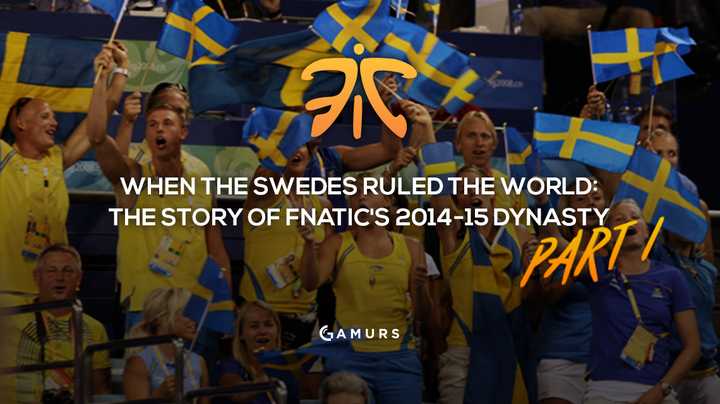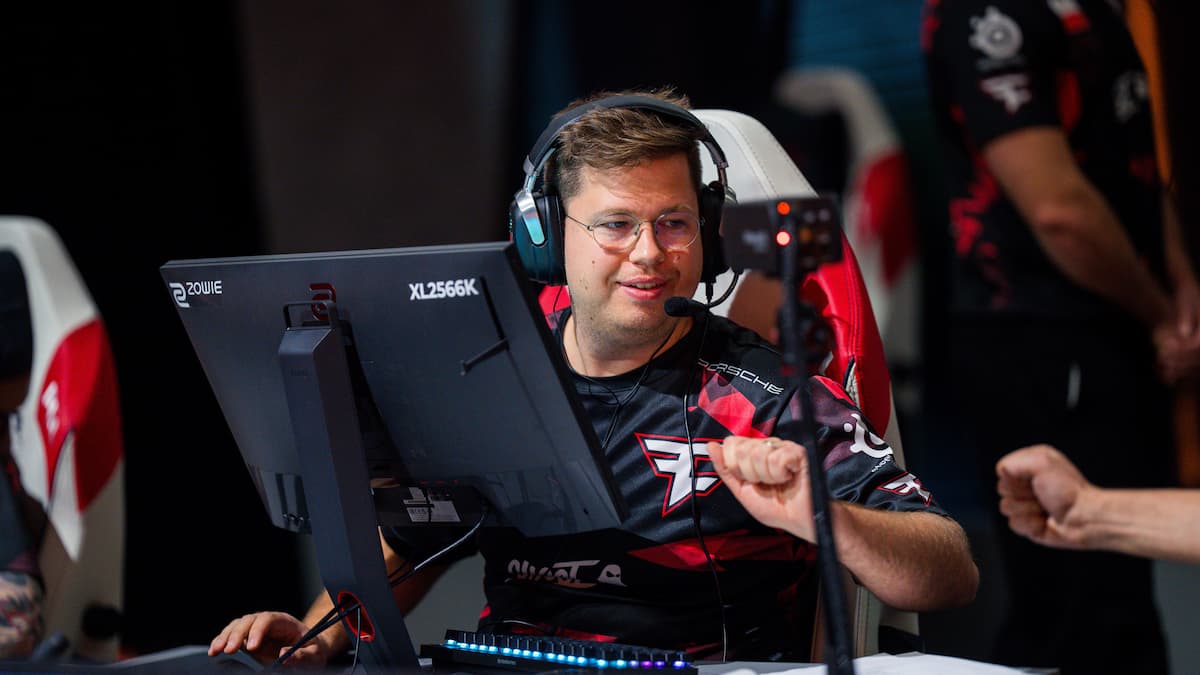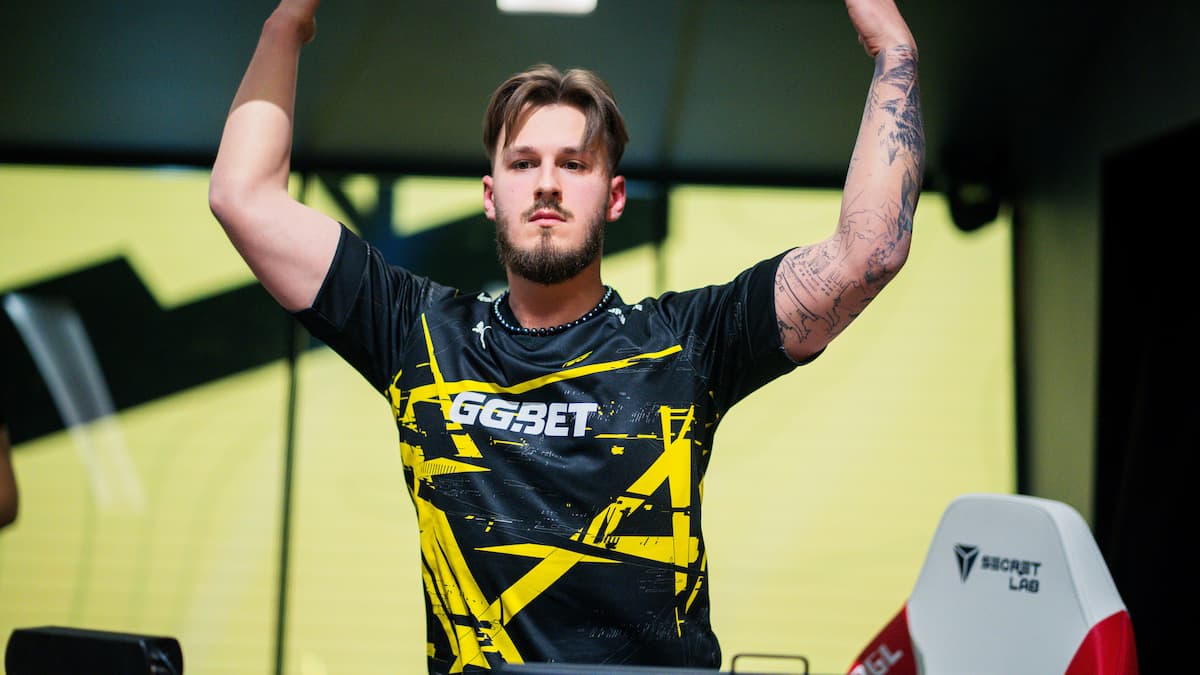This is the first part of a two-part series.
Vehement stares and icy frustration shot horizontally across the line of monitors in the soundproof booth as the in-game score ticked up to 16-2, signalling the end of the match, and with the benefit of historical hindsight – the end of a dynasty. The victorious team donned in a navy-blue, and playing under the banner of EnVyUs exploded out of their chairs, sharing high-fives and hugs of mutual relief and happiness. On the other side of the stage, the mood was much more somber, as the team wearing a contrasting black-and-orange, and known as Fnatic, stared with a solemn steadfastness at both each other and their screens
Following the loss to EnVyUs, Fnatic exited the tournament in the quarterfinals. The last loss of this magnitude had been a year ago and to a variation of this same French roster – it was poetic to those that love the narrative of the game, but heartbreaking to the members of the Fnatic side.
The game, Counter-Strike: Global Offensive. The date, Oct. 31, 2015. The tournament, DreamHack: Cluj-Napoca, the seventh of CS:GO’s largest and most competitive “Major” tournaments. The prize pool, $250,000.
Source: softpedia
For most teams and players in the world, a quarterfinal finish at the apex of CS:GO tournament competition is a dream. To the members of Fnatic, it was a paradigm shift, an essential a sign for change. Twelve days after their loss and exactly two years since joining the Fnatic organisation, captain, and in-game-leader Markus “pronax“ Wallsten announced his exit from the team. This change of players would break apart the most storied, dominant, prestigious and dynastical teams in the history of CS:GO as a game, and one of the greatest teams in the Counter-Strike franchise which dates back to 1999.
Their resume flaunts first place finish after first place finish. Their players boast a mixture of consistent greatness and ephemeral outbreaks of mind-boggling skill. Their path to dominance over other great teams and willingness to enact change within themselves is like no other. It is unlikely that the world will ever get to witness the same ascendancy and control the roster of Olof “olofmeister” Kajbjer, Freddy “KrimZ” Johansson, Jesper “JW” Wecksell, Robin “Flusha” Rönnquist, and pronax, had over the scene from mid-2014, to late-2015.
Their players boast a mixture of consistent greatness and ephemeral outbreaks of mind-boggling skill.
Their story to holding tyrannical levels of power over the scene is one of fighting a constant battle against other legendary sides and unforgettable controversy on the biggest stage, week in and week out for well over a year straight.
The start of their journey to the top begins with the genesis of the team itself. This infamous lineup would emerge out of the ashes of the third best Swedish roster – LGB eSports. The two LGB stars, KrimZ and olofmeister, joined Fnatic following the collapse of the LGB organisation. This addition saw the surprising removal of fan-favourite rifler Andreas “schneider” Lindberg, who despite being one of the strongest players on the team was kicked in favour of the LGB duo. This controversial move saw much of the community dogmatically state that the removal of schneider was a mistake, but then again, since when did the hltv comments section yield a correct prediction? With a little over a month to integrate the new players before what would be the biggest tournament of the year in ESL One: Cologne 2014 looming on the horizon, the pressure was on the Fnatic side to prove their roster change to be one cemented in results and form rather than speculation and potential.
In Cologne, the Swedes came in as nothing more than a second-tier side expected to make a splash in groups. This was especially well-founded due to the loose style that Fnatic had been most successful with before the roster change being almost impossible to replicate with the addition of the LGB duo, and a new team chemistry being decided upon. Their group stage game against the favourites to win ESL One Cologne 2014 – Virtus.pro. This would hint at Fnatic’s unique method of winning games that would eventually evolve into a more refined recipe of play and form the basis of their future dominance. Four words – Counter-Terrorist (CT) side dominance. Even with the map being the newly introduced Overpass that had unfamiliar CT side positions to hold, combined with Virtus.pro’s unrelenting Terrorist (T)-side pushes, Fnatic – led by Olofmeister – managed to weather the storm and upset Virtus.pro in overtime.
Fnatic then entered into the playoffs of Cologne and valiantly charged through the other favourites to win – Natus Vincere and Team Dignitas – in what is now recognised as the dark horse run that started an era. Although they were stopped in terrifyingly close fashion by a transcendent Ninjas in Pyjamas, who were finding vintage form again, the raw combination of aim-and-elite fencer-like poise from flusha throughout the playoffs catapulted him into the conversation of being a top five player in the world. With the form of their players being on par with the best in the world, an expansive map pools and unique CT side dominance, post ESL One: Cologne, Fnatic was ready to begin their conquest of the scene.
The raw combination of aim-and-elite fencer-like poise from flusha throughout the playoffs catapulted him into the conversation of being a top five player in the world.
Their second place at Cologne seemed to only transform the Fnatic side into a group of alchemists who were eager to turn their silver medal into gold. No matter which continent they played on, tournament success followed them. Their reign of terror burned through the rankings like an unstoppable plague, quickly affirming themselves as the undisputed number one team in the world. The only David to ever challenge the Swedish Goliath, came in the form of the French tactical genius Kevin “Ex6tenz“ Droolans, and his expertly-operated marionette Kenny “KennyS“ Schrub, who managed to play upset at the DreamHack 2014 Invitational II.
Fnatic had claimed three consecutive international LAN titles in the lead up to the last major of 2014 in DreamHack Winter 2014, giving flashbacks to the Ninjas in Pyjamas dominant run of 2012/13. The fuel for this dominance did not come from flusha who had so expertly pushed Fnatic to the top at Cologne, instead, coming in the unlikely form of KrimZ and JW.
What most new fans of the game might not realise is that KrimZ was, for intermittent bursts of time, the best player in the world and the superstar of Fnatic. He was the lynchpin in defining Fnatic’s CT side dominance, and effectively cordoning off any chance of beating Fnatic on their home map of Inferno. This Inferno dominance came from his infamous duo with olofmeister on the B site proving impossible to break. His emphasis on clutching, passive positioning and intelligent play separated him from every other player in the server at both ESWC 2014 and the FACEIT Stage 2 Finals. He was the most dominant player in the world.
However, having such an insane passive clutcher in your ranks doesn’t make you the best team in the world, and although he would be supported by Olofmeister’s play in 2015, for 2014, his aggressive partner-in-crime would be JW. The dichotomy of KrimZ and the unpredictable, hyper-aggressive, entry style of the Swedish Cowboy JW gave them both a full range of styles and a near impenetrable CT side defence. When these two ends of the extreme are filled in with three stable, fully-calm under pressure teammates who can all step up in big moments individually, then there lies all the required parts needed to create a dynasty.
When looking at their resume of tournaments in this time period of late 2014, there is one that sticks out like a sore thumb, their top-eight finish at DreamHack Winter 2014. Fnatic came in as favourites, and although their dominance before this tournament is something to behold, the controversy and drama of DreamHack Winter 2014 eclipses this like nothing else.
The dichotomy of KrimZ and the unpredictable, hyper-aggressive, entry style of the Swedish Cowboy JW gave them both a full range of styles and a near impenetrable CT side defence.
After being upset in close fashion by HellRaisers who had the now widely loved and praised Oleksandr “s1mple” Kostyliev top fragging in a group stage game, the Swedes because of their second seed spot were matched up against LDLC in the quarterfinals. The French side of LDLC had been on a similar rise to Fnatic, and were firmly holding down the second best team in the world spot, beating everyone below them, but never being able to beat Fnatic on LAN.
The first two maps went as expected with LDLC winning their map pick Dust II, and Fnatic winning their map pick Cache. The final map would be on Overpass, a risky affair for Fnatic considering LDLC’s comfort on the pick and their general lack of experience on the map. The score was 13-3 to LDLC, and even with Fnatic’s history of godly CT side performances when down, and LDLC’s history of choking in big games, it seemed to be an insurmountable amount of rounds for the Swedish side.
No totalitarian kings get to their position without a healthy dose of chicanery and borderline ethical behaviour, and so in what was the most controversial in-game plays in the history of CS:GO, Fnatic executed a triple boost for olofmeister in CT spawn. For those uninitiated, a boost is where one player can jump on another player’s in-game player model to elevate their height. The in-game mechanics prevent triple boosts, due to the exploitable nature of having a player so high, but Fnatic found a small spot in the spawn map that allowed to do such a thing – and to great effect. The boost gave olofmeister game breaking levels of information and position to kill, which had never been seen on a wide level by the public before.
The commentator at the time, Anders, described it as “Olofmeister is just reigning down death from above – he is essentially just a God picking people out.” The boost was the key advantage that allowed Fnatic to come back into the game and win 16:13; however, in expected fashion there was much discussion over the boost and whether it was cheating, as the Dreamhack tournament rules banned ‘pixel walking’. Whilst the nature of the boost is still discussed to this day, essentially Fnatic was forced to replay the game, and rather than play the map out again the Swedes forfeited the match and exited the tournament in the quarterfinals. This series was one of the most pivotal of the year, and not only drew away from Fnatic’s form in the tournaments beforehand, but also the overall tournament win by LDLC, a real loss/loss situation in hindsight.
Olofmeister is just reigning down death from above – he is essentially just a God picking people out”
Despite the antagonised community reaction at the Swedes in black and orange, that would become the root of their ‘sith overlord’ persona. Fnatic still finished 2014 by winning the ESEA Global Invite over Virtus.pro. Although this win came at the cost of losing to them in a best-of-three in the upper bracket, it was still another first place finish for the seemingly Aztec-esq gold hungry Fnatic side. This loss to Virtus.pro at ESEA and LDLC at Dreamhack in the backend of the season would soften their finish to the year, but nonetheless their resume and match history spoke for itself. They had the strongest players, the most unbreakable map pool and the pinnacle of CT side play in a meta dominated by CT side performance. They had form under pressure, but most importantly, a trophy cabinet that could rival the best of them.
Looking back, it is undisputable; 2014 was the year Fnatic took the mantle of the best team in the world and ran with it. It was their era, their dynasty, and they truly ruled the CS:GO world.
What are your thoughts on Fnatic’s 2014 dominance? Let us know in the comments below or by tweeting us on Twitter – @GAMURScom.
Written by Max Melit – @max_melit.
Image credit: Father Ebenzer
This is part one of a two part series. Part two will be released on Wednesday, Oct. 5.






Published: Oct 3, 2016 10:52 am